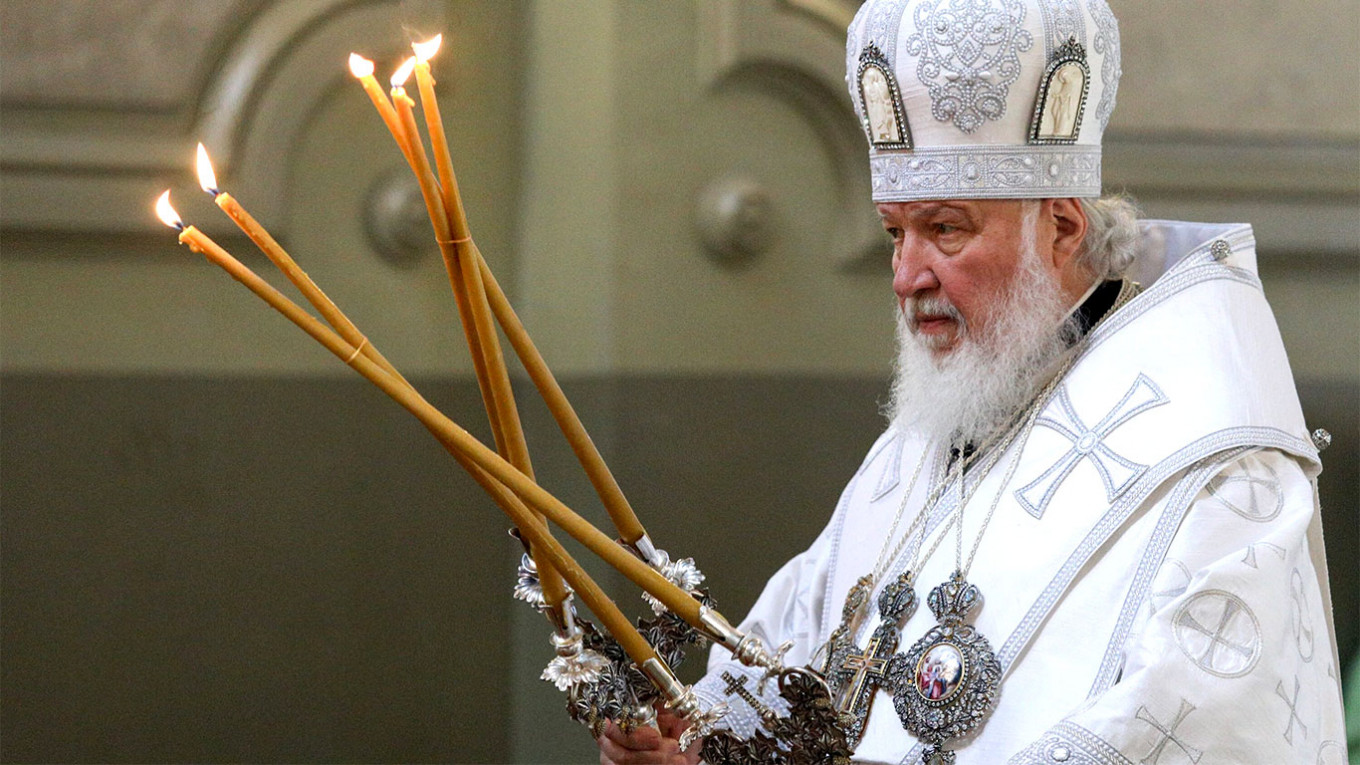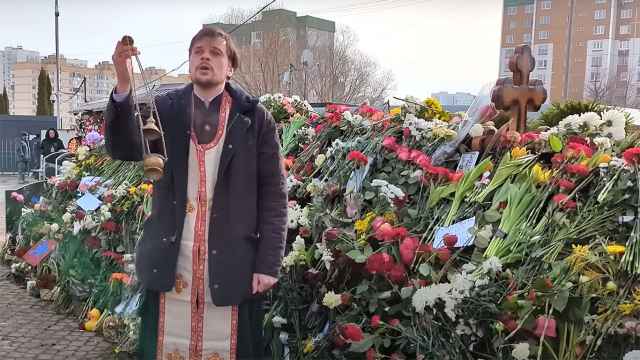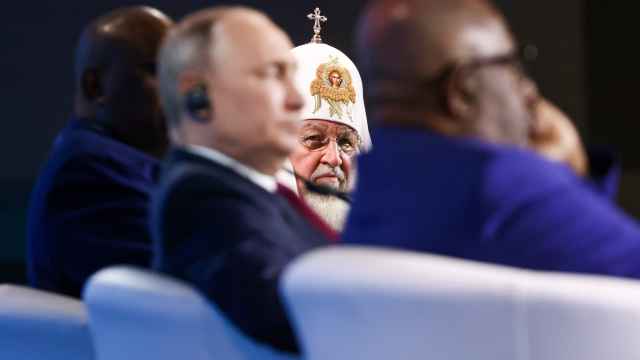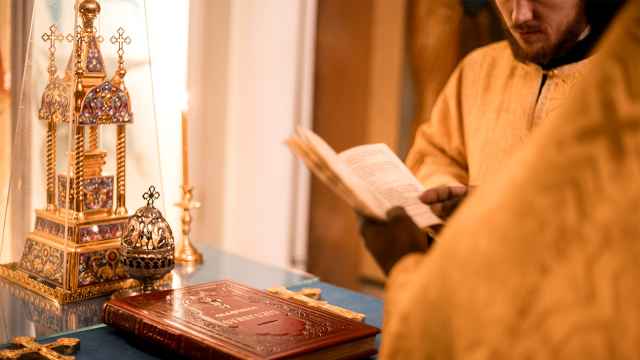On June 3, the European Union reached an agreement on the sixth package of sanctions against Russia after difficult talks with Hungary. To avoid its veto, the other member states had to remove the name of the Moscow patriarch from the EU’s blacklist. Why does the prime minister of a non-Orthodox state so fervently support to head of the Russian Orthodox Church, the main ally of Putin in the war against Ukraine?
Some observers search for the answer in the conservative mindsets of Viktor Orban and Patriarch Kirill, who endorse traditional values. The present partnership between the Hungarian state and the Moscow Patriarchate, however, also has historical roots. A lesser known page of their history is the Kremlin’s project for establishing an autocephalous Hungarian Orthodox Church after the Second World War. The initial idea of a unified Hungarian Orthodox Church belongs to Horthy’s regime. As an ally of Nazi Germany, it established control over areas with a significant Orthodox population and considered that a unified church institution would facilitate its administration.
Despite the political change after the fall of Nazi Germany, the postwar Hungarian state did not give up the idea of a local Orthodox Church. The major obstacle to this plan was the specific composition of the Orthodox minority in Hungary. Only a small number of its members were ethnic Hungarians. Meanwhile, the majority of the Orthodox believers had settled in the country as refugees from the Ottoman Empire and Bolshevik Russia. As a result, the Orthodox minority consisted of different ethnic groups belonging to five different jurisdictions: the Ecumenical Patriarchate of Constantinople, the Serbian Patriarchate, the Romanian Patriarchate, the Bulgarian Exarchate, and the Russian Orthodox Church Abroad. When the Red Army occupied Hungary, however, the last one was not able to administrate its parishes because it was treated as Hitler’s ally by the Soviets.
In 1946, the Kremlin showed an interest in this Orthodox minority. As in other countries under the Red Army’s control, officially the initiative came from a local Orthodox priest, who appealed to the Moscow Patriarchate to take care of his co-believers. According to Russian archival sources, the Ministry of Education and Religious Denominations in Budapest supported the spread of Moscow’s jurisdiction over the territory of Hungary. This act had to be guaranteed by a concordat between the Russian patriarchate and the Hungarian state. In a distant future, the plan presumed the possibility of granting autocephaly to the Hungarian Orthodox Church.
For this purpose, in August 1946, a Russian church delegation, led by Bishop Nestor of Mukachevo and Uzhgorod, arrived in Budapest. It had to place the local Orthodox Russian émigrés with the Moscow Patriarchate and investigate the situation with the other Orthodox parishes. In final terms, the Russians concluded that there was no Hungarian Orthodox ecclesiastic suitable for the office of bishop. Therefore, the Hungarian government referred to the Kremlin with a request for a bishop from the Soviet Union. Moscow and Budapest agreed that the Russian bishop would be appointed as a temporary leader of the Hungarian Orthodox Church. It was also decided that a Hungarian church delegation would pay a visit to Patriarch Alexii in order to discuss the respective details. The multi-jurisdictional structure of the Orthodox communities in Hungary, however, created serious obstacles. For this reason, on 21 October 1946, the Russian Holy Synod decided to take under Moscow’s jurisdiction only the Russian and Hungarian parishes, while leaving open the question about the Orthodox Serbians, Romanians, Bulgarians, and Greeks.
At the same time, the Ecumenical Patriarchate opposed the plan for the establishment of a Hungarian Orthodox Church. In December 1946, Archimandrite Ilarion (Vasdekas), who was in charge of the Greek parishes in Hungary, wrote to a churchman from the Moscow Patriarchate that “the Hungarian Church, if it is possible to call it so, has been under the jurisdiction of the Patriarch of Constantinople since the seventh century, who, according to the contemporary chronographers, sent a church mission to this country.”
Ilarion also underlined that though, at a later stage, the Hungarian lands fell under the control of the Roman popes, the Ecumenical Patriarch had never given up his rights over them. Still, the Greek archimandrite suggested that the Hungarian church question could be solved by the joint efforts of the patriarchates of Constantinople and Moscow. Their solution, however, had to respect the canonical rights of the Patriarch of Constantinople, who as a Bishop of New Rome had the privilege of setting up new autocephalous churches situated outside the territories of the existing Orthodox autocephalous churches. It also had to recognize the role of the Patriarchate of Constantinople as the mother church of the Hungarian one.
In this regard, Ilarion commented that the rights of the Russian Orthodox Church in this particular situation stemmed from the Soviet military control over Hungary, which allowed this particular religious institution to provide care for the local Orthodox population. The appointment of the future leader of a Hungarian Orthodox Church, however, had to be arranged by the patriarchates of Constantinople and Moscow. In this respect, Ilarion suggested his own appointment to this position and mentioned that the Ecumenical Patriarch would support it. In their turn, the Serbian and the Romanian patriarchates also opposed the plan for a Hungarian Orthodox Church and appealed to the Russian church leadership to stop it.
Despite this resistance, the Hungarian government continued with preparations. In April 1947, it asked Patriarch Alexii to consecrate Janos Varju as Bishop of the Hungarian Orthodox Church and to include him in the Holy Synod in Moscow. In this way, the new church was to receive a status similar to that of the Czechoslovakian Orthodox Church. The head of the Russian Church did not decline the proposal but required the Hungarian government to negotiate the establishment of the new church with Romania and Yugoslavia and to take into account the opinion of the Romanian and Serbian parishes in Hungary.
As a result, the project for a Hungarian Orthodox Church was halted. The Soviet state leadership did not give green light to its forceful realization because it would antagonize the Serbian and Romanian churches and draw them closer to the Patriarchate of Constantinople at a moment when the Kremlin was preparing the convocation of an ecumenical council in Moscow, scheduled for the autumn of 1947. It was expected to transfer the ecumenical title of the Patriarch of Constantinople to his Russian peer. Meanwhile, the Cold War and Tito’s revolt against Stalin changed the geopolitical situation. The rift between Yugoslavia and the Soviet Union excluded the Serbian Orthodox Church from the orbit of the Moscow Patriarchate. The plan for an autocephalous Hungarian Orthodox Church has been shelved for many years.
In the present geopolitical situation, however, the Kremlin could take advantage of its reviving. On the one hand, since the recognition of Ukrainian autocephaly by the Ecumenical Patriarchate, the Moscow church leadership is looking for revanche in various places on the globe. From this perspective, the creation of an autocephalous Orthodox Church in the lands of Medieval Panonia would change the balance in the Orthodox world.
In particular, as a lieu de mémoire for the Slavic nations praising Sts Cyril and Methodius as the creators of their alphabet, liturgy, and culture, the establishment of a Hungarian Orthodox Church would become a highly sensitive issue. At the same time, the Russian state and church authorities might employ the situation for diminishing the symbolic value of the 1980 declaration of the two holy brothers as Patrons of Europe by Pope John Paul II, famous for his struggle against communism. In his turn, Orban also could use the new church as a means of suppressing the liberal voices in the local Catholic and Protestant churches.
On the other hand, even if the Hungarian autocephaly project remains only on paper, the Moscow patriarchate could use it for exerting pressure on those Orthodox churches that have structures in Hungary. Especially sensitive would be the Serbian Patriarchate that has just agreed to give up its jurisdiction on the Orthodox Church in the Republic of North Macedonia. As in the late 1940s, these churches would protest without being able to unite against the Moscow Patriarchate and Orban’s government.
In short, the issue of Hungarian autocephaly, realized or not, has the potential to provoke religious, political, and social conflicts in Southeastern and Central Europe that might weaken the unity of the European Union and NATO.
This article was originally published in Public Orthodoxy.
A Message from The Moscow Times:
Dear readers,
We are facing unprecedented challenges. Russia's Prosecutor General's Office has designated The Moscow Times as an "undesirable" organization, criminalizing our work and putting our staff at risk of prosecution. This follows our earlier unjust labeling as a "foreign agent."
These actions are direct attempts to silence independent journalism in Russia. The authorities claim our work "discredits the decisions of the Russian leadership." We see things differently: we strive to provide accurate, unbiased reporting on Russia.
We, the journalists of The Moscow Times, refuse to be silenced. But to continue our work, we need your help.
Your support, no matter how small, makes a world of difference. If you can, please support us monthly starting from just $2. It's quick to set up, and every contribution makes a significant impact.
By supporting The Moscow Times, you're defending open, independent journalism in the face of repression. Thank you for standing with us.
Remind me later.






